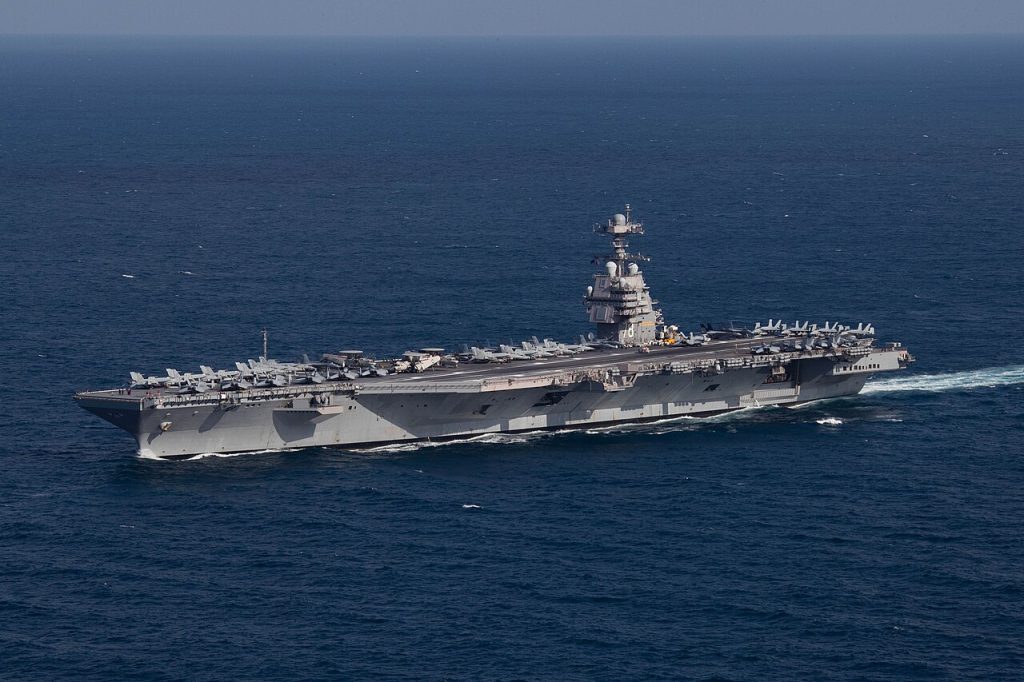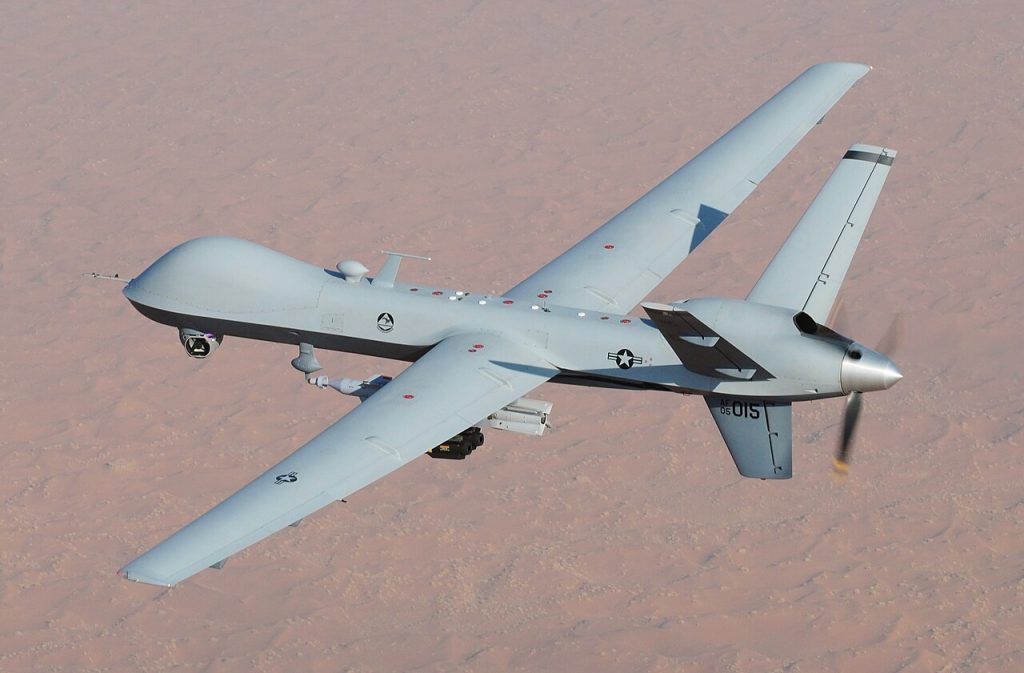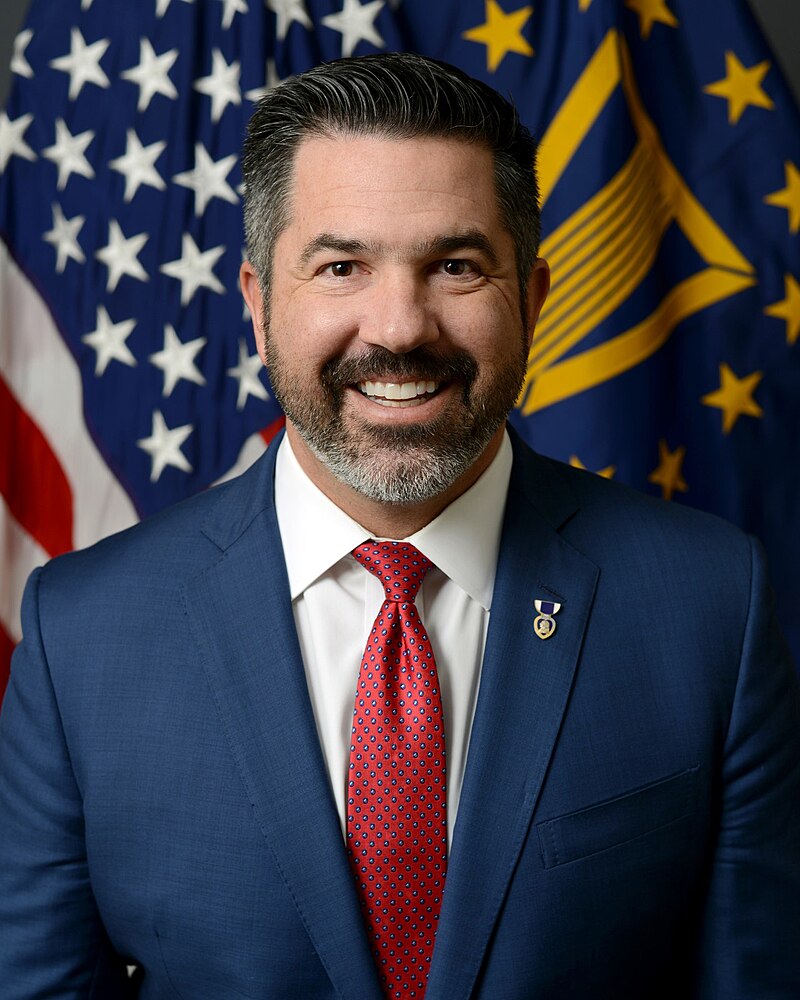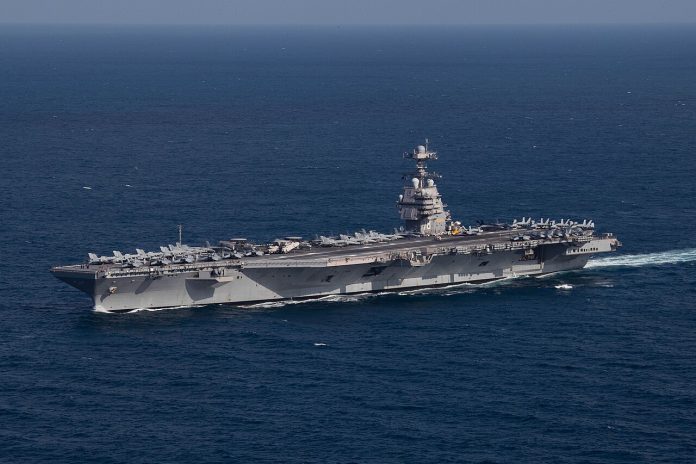
“The military presence in the Caribbean is too big for just hitting a few speedboats,” Elliott Abrams told CNN. That observation captures the essence of the latest U.S. naval maneuver the arrival of the USS Gerald R. Ford Carrier Strike Group in waters near Venezuela. The deployment constitutes a significant ramping up of Washington’s pressure campaign against President Nicolás Maduro, mixing counter-narcotics operations with overt geopolitical signaling.
In the past two months, the U.S. has assembled one of the most massive concentrations of sea and air military power in the region in a half-century. Formally billed as an exercise to dismantle transnational criminal organizations, this military build-up has raised questions regarding its true intent, its legality, and its potential impact on the reordering of the strategic balance in Latin America. Following are nine critical dimensions of this unfolding operation:

1. Ford Strike Group Brings Unparalleled Firepower
The USS Gerald R. Ford, America’s newest and largest aircraft carrier, leads a formation that includes guided-missile destroyers USS Bainbridge, USS Mahan, and the air and missile defense command ship USS Winston S. Churchill. Embarked aboard are nine squadrons from Carrier Air Wing Eight, featuring F/A-18E/F Super Hornets, E/A-18G Growlers, E-2D Advanced Hawkeyes, MH-60S and MH-60R Seahawks, and C-2A Greyhound transports. These assets provide anti-air, anti-surface, and anti-submarine capabilities far beyond the needs of counter-smuggling patrols.

2. Largest Regional U.S. Force in Decades
The Ford Strike Group joins an already formidable presence, including the Iwo Jima Amphibious Ready Group with 1,600 Marines, F-35B stealth fighters, MQ-9 Reaper drones, AC-130 Ghostrider gunships and a nuclear-powered submarine. In all, U.S. forces in the Caribbean now number more than 10,000 personnel-the largest American military footprint in Latin America in decades.

3. Official Mission vs. Strategic Signaling
Pentagon spokesman Sean Parnell has said the deployment will “disrupt narcotics trafficking and degrade and dismantle Transnational Criminal Organizations,” but analysts say the scale and composition of forces imply a pressure campaign to rattle Venezuela’s leadership. The presence of long-range strike platforms, including Tomahawk-equipped destroyers, would allow precision attacks against Venezuelan military infrastructure short of threshold-crossing invasion-scale operations.

4. Venezuela’s Degraded Military Readiness
Retired Venezuelan officers have estimated the operational capacity at a mere 33-35%. From T-72 tanks to Su-30 fighter jets, key assets suffer under severe maintenance deficits. While the S-300VM and BUK-M2E, among other air defense systems, remain in inventory, they are mostly inoperable due to the dearth of upkeep. Communication networks have fallen to such a low level that officers use their personal cellphones for coordination.

5. Legal and Political Controversy
Since September, the US the strikes have reportedly resulted in 76 fatalities, according to reports. The former ICC prosecutor, Luis Moreno Ocampo, told the BBC that those could amount to crimes against humanity since the targets are civilians in peacetime. lawmakers such as Sen. Rand Paul have raised concerns over the legality of the strikes. The UK has stopped intelligence sharing, citing legality concerns.

6. Potential Shift to Land Targets
While the president has repeatedly denied that any plans for strikes inside Venezuela are in the works, he appears to suggest that broader operations are now on the table. Other analysts, such as Evan Ellis, predict the possibility of precision strikes against drug labs, clandestine airstrips, or nodes linked with the leadership of the cartel utilizing Tomahawks, drones, and electronic warfare to take out air defenses. Such actions would try to avoid civilian casualties while targeting regime-linked criminal networks.

7. Operational Tactics and Capabilities
Air wing of Ford sustains flight operations day and night; destroyers provide Aegis-based missile defense; MQ-9 Reapers and AC-130 gunships conduct precision engagement against small, fast vessels. An electronic warfare architecture-including the Growler-can jam radar and communications, paving the way for uncontested airspace over targeted zones.

8. Regional Diplomatic Fallout
Colombian President Gustavo Petro has suspended security cooperation with U.S. agencies over the boat strikes; Venezuela calls the buildup a provocation. The U.K.’s intelligence pause underlines growing allied unease. These moves could make coalition building more complicated for any expanded operation and underlined diplomatic costs of going it alone militarily.

9. Strategic Outcomes and Risks
The range of possible endgames runs from the capture of the cartel leaders to sustained harassment of regime assets, or even internal uprisings supported by defecting military factions. Analysts have warned that an abrupt collapse of the Venezuela regime could plunge the country into political chaos. The U.S. has ample capacity for air and missile strikes but lacks the troop strength for occupation, so any campaign would be short, focused, and aimed at disabling leadership rather than full territorial control. Coming as it does amidst various assertions regarding Colombia’s supposed ties with local insurgency groups, the arrival of the USS Gerald R. Ford into the Caribbean is infinitely more than some counter-narcotics mission-it is a considered projection of U.S. power in a politically volatile theater.
Whether or not the scale of the operation sustains itself by way of limited maritime interdictions or escalates to precision strikes ashore, its scale and sophistication signal Washington’s readiness to take definitive action. The deployment offers a case study in modern naval power projection, strategic signaling, and the complex interplay between military capability and political intent for the defense analyst and geopolitical observer alike.


